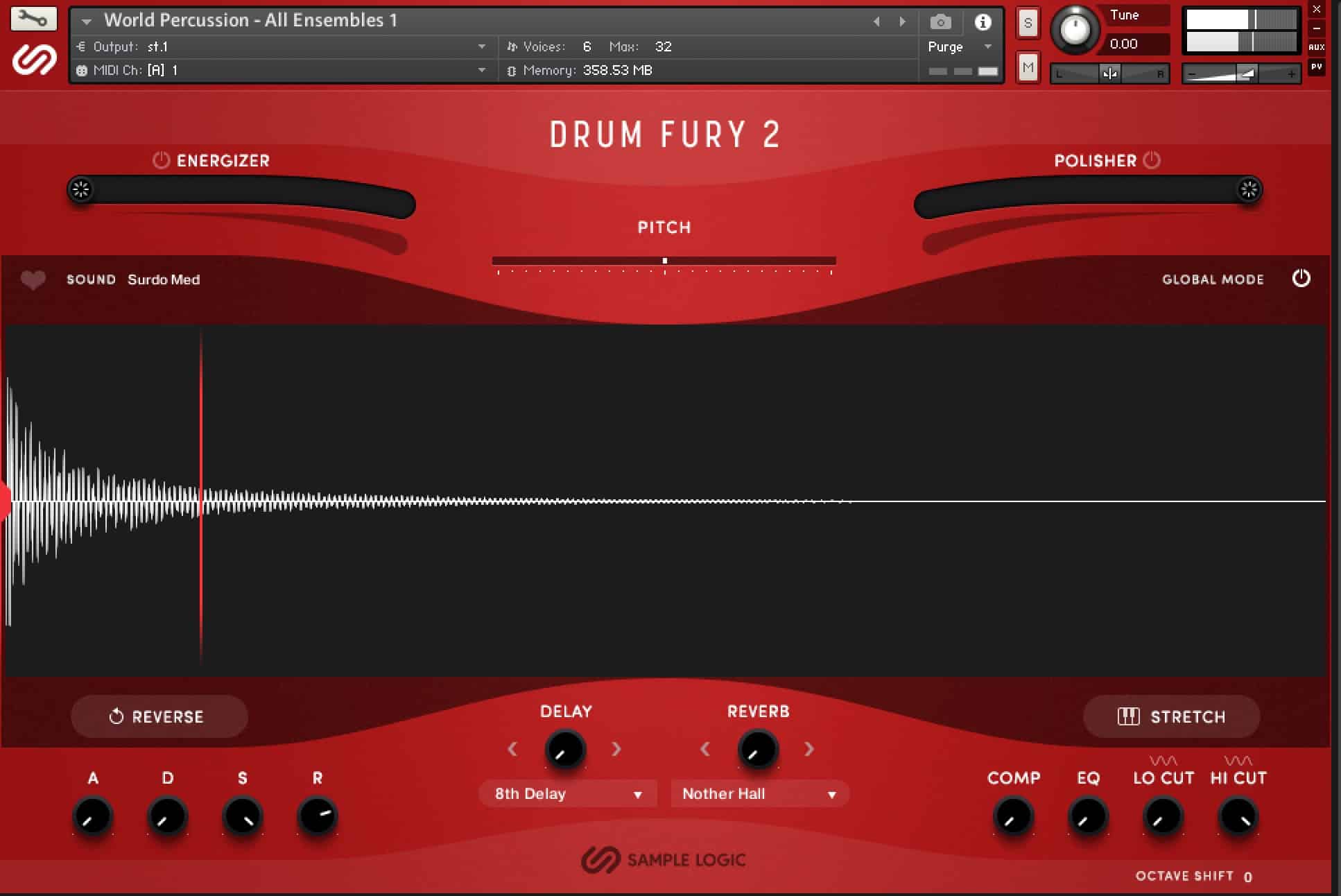A well-done horror film is designed to get your heart racing and keep you on the edge of your seat. Part of what makes these movies so suspenseful is the way that they use sound to create an anxious atmosphere.
The score might feature a low, persistent hum that sets your teeth on edge, while the sound design makes every creak of a floorboard or whisper in a dark room feel amplified. Thisfillsmovieswitha sense of unease that can be hard to shake long after the credits have rolled.
For many viewers, this is part of the appeal of horror films; they provide a chance to experience fear in a controlled setting. Whether it’s the jump scares of a slasher flick or the slowly building dread of a Gothic ghost story, horror movies offer a unique opportunity to explore the darker side of human nature.
9 Horror SoundPacks – 2200+ Horror Sound Effects
Looking to add some serious spine-chilling sounds to your next horror production? Look no further than the MACABRE BUNDLE by SampleTraxx. This collection of nine horror-themed sound packs contains over 2200 sound effects designed specifically for creating suspense and fear in your audience. Each sound pack in the MACABRE BUNDLE offers a diverse range of eerie and unsettling sounds, including dark atmospheres, twisted textures, haunting drones, and chilling ambiences. From bone-chilling screams to sinister whispers, this collection has everything you need to elevate your horror sound design to the next level. Experience the power of amazing cinematic sound design with the MACABRE BUNDLE and take your audience on a terrifying audio journey they won’t soon forget.
This bundle has everything you need to inject some serious terror into your projects from ethereal string and brass sounds to impacts and eerie atmospheres!
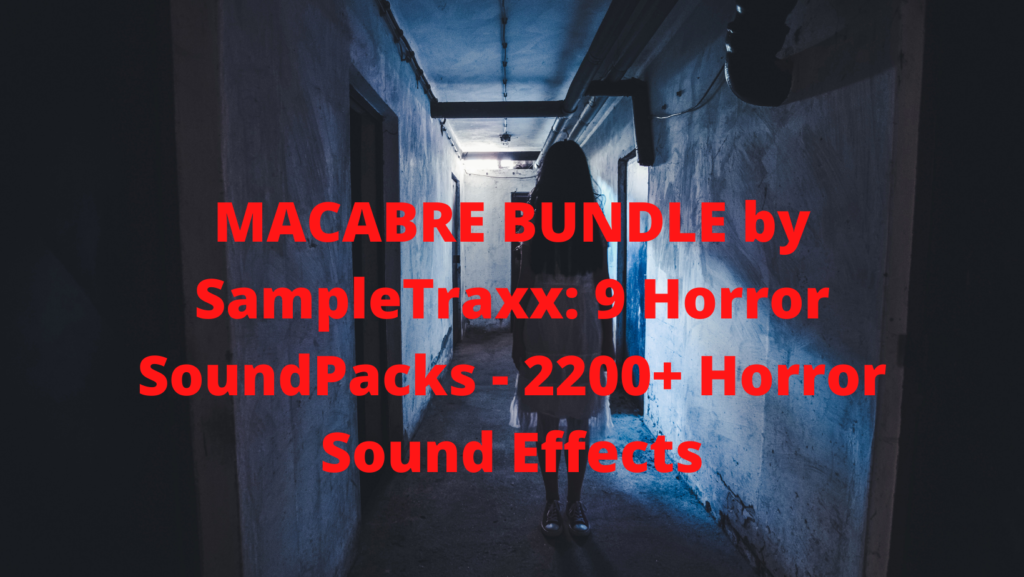
MACABRE Bundle
A well-designed horror soundscape can be the difference between a jump scare that makes you gasp and one that makes you laugh. And nobody wants their audience laughing when they’re trying to be scared.
That’s why the MACABRE Bundle 2200+ Horror Sound Effects is such an essential tool for any horror filmmaker. This comprehensive collection features eerie violin and tortured strings, braams and brass of all sizes, signature sounds, designed and raw horror vocals, suspenseful atmospheres and sinister soundscapes, impacts and benders, heavy-hitting sound design elements, clock loops and much more.
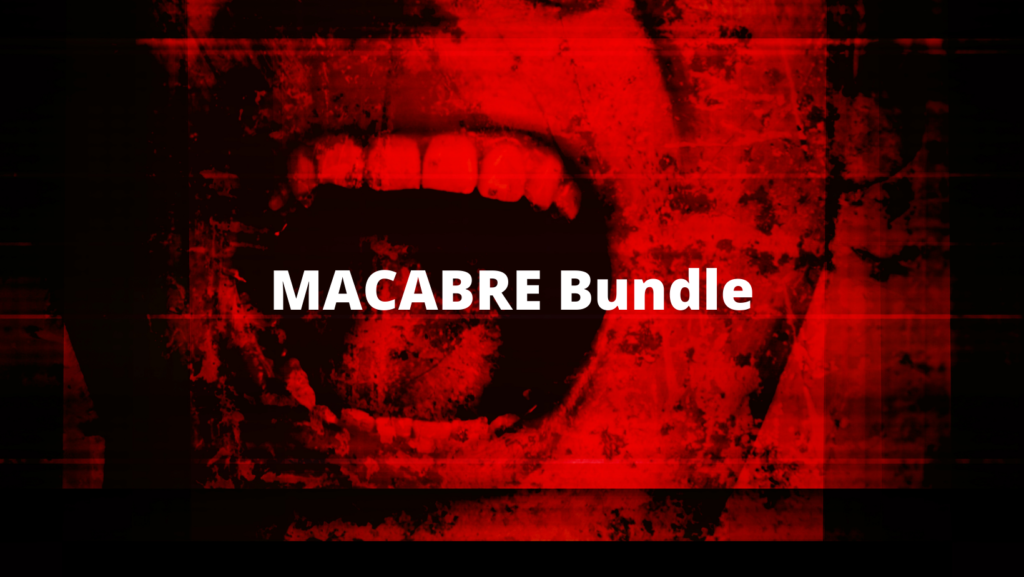
Whether you’re looking to create an unsettling mood or a full-on fright-fest, the MACABRE Bundle has everything you need to make your audience scream.
RITUALS
Rituals is a new cinematic sound design collection dedicated to modern horror sound projects. Expect eerie violin noises, fragments and phrases, sinister soundscapes, benders, heavy-hitting sound design elements, and clock loops.
This library is perfect for creating a dark and suspenseful atmosphere for your next project. Whether you’re working on a film, video game, or other audio project, Rituals will help you create the perfect sonic environment for your story.
With its vast array of unsettling sounds, it’s sure to send a shiver down your spine. So if you’re looking to add some chills to your next production, be sure to check out Rituals.
RAW CELLO FX
There’s something uniquely captivating about the sound of a cello. Its rich, full tone can convey a wide range of emotions, from the gentle innocence of a lullaby to the harrowing intensity of a cinematic Scores. Now, thanks to RAW CELLO Fx, you can explore an entirely new side of this versatile instrument.
RAW CELLO Fx features manipulated and mangled cello sound effects designed to provide a unique set of organic samples between music and noise. With 252 Mb of audio and 8 Kontakt Instruments, it’s easy to create bold new sounds that will expand your musical palette.
So whether you’re looking to add some ambient textures to your tracks or create an otherworldly soundscape, RAW CELLO Fx is sure to become a valuable tool in your sonic arsenal.
DANZA MACABRA
Danza Macabra is a collection of signature sound effects that are made out of real instruments.
The collection features organic hits and impacts, designed cello and violin bowed sound effects, dissonant piano clusters, string tuning noises, designed glockenspiel and cymbals, and clock loops. The audio is of high quality and there are over 330 WAV sounds included in the package.
Danza Macabra is a great choice for anyone looking for organic and realistic sounding sound effects.
CLOCKWORKS Vol.1
CLOCKWORKS Volume 1 is a library of ticking clock sounds, designed to add an element of realism to your productions. The library includes 4 loop folders at 80-90-100-120 Bpm, plus an extra folder of mechanical sound effects and processed field recordings.
348Mb of audio is included, with 207 clock loops and 33 one-shots. The 6 Kontakt instruments are compatible with 5.8+ Full Player only. Clockworks Volume 1 is a great way to add realism and tension to your tracks.
CLOCKWORKS Vol.2
CLOCKWORKS Vol.2 is a clock loops collection that features never-ending tick-tock, custom metal ticking, antique tick-tock, and grandfather clock sounds.
With a large spectrum of modern to old, clean to rusty sounds, this library provides you with quick access to a range of clock-related sound effects, organized in 4 WAV folders. Inside you’ll find 120Mb of audio and 148 Wav Loops in 48/24 resolution.
7 Kontakt Instruments are also included, though the Kontakt Full 5.8+ Player is required and not supported. Whether you need the perfect sound to compliment a scene or just want to add some unique flavor to your project, CLOCKWORKS Vol.2 has you covered.
BRAAMS Vol.1
BRAAMS Vol.1 is a collection of 130 designed and single element sounds with pitch information, perfect for adding a touch of drama to your music.
With 820Mb of audio, this library provides a wealth of options for sound designers and composers alike. The Kontakt instruments are easy to use and offer a wide range of possibilities for creating unique soundscapes.
Whether you’re looking for low-end musical tones, distant horns, massive low brass, or bass morphs, this library has everything you need to add some serious bottom end to your tracks.
BRAAMS Vol.2
BRAAMS Vol.2 is a new collection of organic, raw and emotive custom braams, low-end tones, processed double bass and field recording, bass morph, pitch motion and more.
This impressive library provides producers with a wealth of content to work with, and the quality is excellent. The recordings are all very clean, and the instruments have a great deal of character. The double bass sounds in particular are outstanding, and the various processing options give you a lot of flexibility in how you use them.
Overall, this is an excellent collection of sounds that will no doubt find its way into a lot of productions.
VOCAL SHOCK
Vocal Shock is a collection of 180 designed male and female cinematic horror vocals and 100 dry vocal sources full of bone-chilling piercing screams, monsters, breath, demonic laughs, creepy and terrifying voices, evil whispers.
With 370 Mb of audio and 9 Kontakt Instruments, Vocal Shock is perfect for adding a new level of terror to your music. The Kontakt instruments are perfect for adding a new level of realism to your music, with each instrument featuring its own unique set of sounds.
The dry vocal sources are perfect for creating your own custom sound effects, and the demons, monsters, and evil whispers will send chills down your spine. Whether you’re looking to add some suspense to your music or create a truly horrifying soundscape, Vocal Shock is the perfect tool for the job.
TRUMPET Fx
TRUMPET Fx is a sound library for Kontakt 5.8+. It features 200+ Wav sounds 48/24 with key information, as well as 39 Kontakt instruments. The library is organized into 8 categories: Single Notes, Powerful Clusters, Short Articulations, Phrases, Sweeps, Atmospheres, Air and Breaths, Distorted and Glitchy. Trumpet FX is a great tool for anyone looking to add some trumpet sounds to their music.
Conclusion
Horror films are great at using sound to compound the anxiety you feel as you witness events unfold onscreen. A film’s score may feature a persistent low hum which only makes the creaking stairs and hushed whispers across a room more unsettling. In some cases, the sound may be so effective that it actually overrides the visual elements of the film.
For example, one of the most memorable scenes in The Exorcist is not the possession itself, but rather the audiotape that is played during the film’s climax. This scene is so effective because it relies solely on sound to create an atmosphere of dread and unease.
By contrast, the visuals in this scene are relatively tame. However, the sound design creates such a sense of foreboding that it more than makes up for any lack of visual scares. In short, horror films rely on sound to create an atmosphere of suspense and dread, which helps to heighten the viewer’s experience.
The MACABRE BUNDLE by SampleTraxx contains 9 horror sound packs, containing over 2,200 horror sound effects. The sound packs are perfect for adding a touch of terror to your music, with sounds ranging from eerie violin and tortured strings to demonic laughs and evil whispers.
The Kontakt instruments are easy to use and offer a wide range of possibilities for creating unique soundscapes. Whether you’re looking to add some suspense to your music or create a truly horrifying soundscape, the MACABRE BUNDLE is the perfect tool for the job.
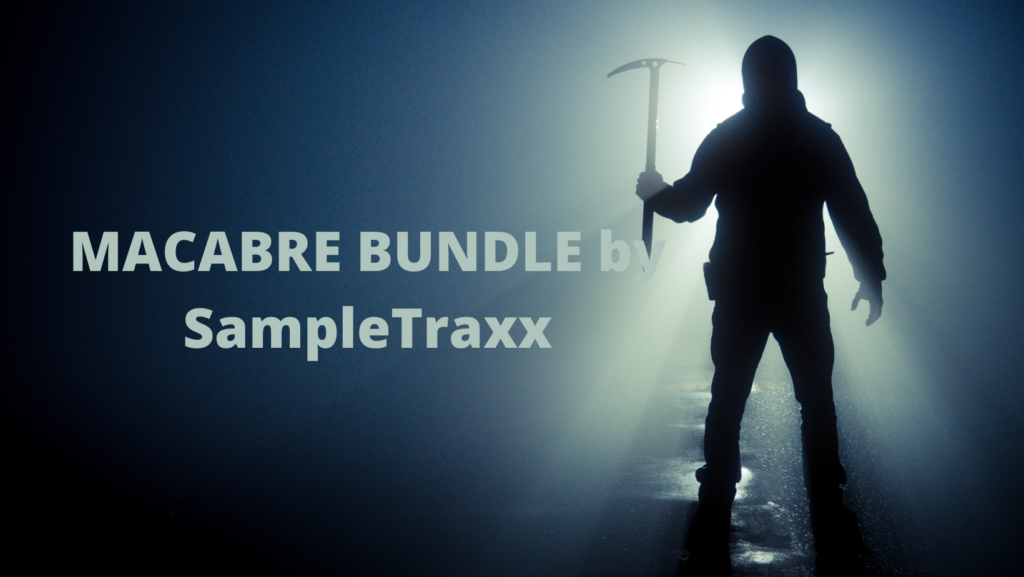
So there you have it, the MACABRE BUNDLE by SampleTraxx. If you’re looking to add some horror sounds to your music, this is the perfect bundle for you.
Horror SoundPacks FAQ
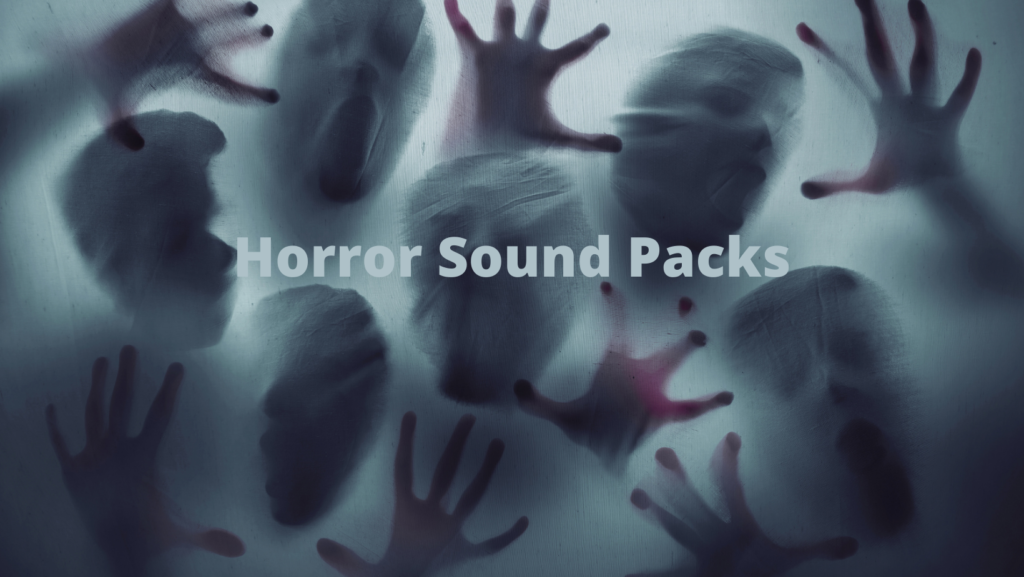
What is the MACABRE BUNDLE?
The MACABRE BUNDLE is a collection of nine horror sound packs, containing over two thousand horror sound effects.
What are the sounds like?
The sounds range from eerie violin and tortured strings to demonic laughs and evil whispers.
What instruments are included?
There are eight Kontakt instruments included in the bundle, ranging from single notes to clusters to atmospheres.
How do I use the sounds?
The sounds can be used in any music production software that supports WAV files. Simply import the files into your software and begin working with them. Trumpet FX is a great tool for anyone looking to add some trumpet sounds to their music.
What software do I need?
Trumpet FX requires a Kontakt version However, the library will also work with any software that supports WAV files.
What sounds are used in horror?
There are a variety of sounds that can be used in horror, from eerie violin and tortured strings to demonic laughs and evil whispers. The MACABRE BUNDLE by SampleTraxx contains a wide range of horror sound effects that can be used in any music production software.
How can I add suspense to my music?
The MACABRE BUNDLE by SampleTraxx is the perfect tool for adding suspense to your music. With over two thousand horror sound effects, it’s easy to find the perfect sound for your project. Simply import the files into your software and begin working with them. Trumpet FX is a great tool for anyone looking to add some trumpet sounds to their music.
What’s the best way to create a truly horrifying soundscape?
The MACABRE BUNDLE by SampleTraxx is the perfect tool for creating a truly horrifying soundscape. With over two thousand horror sound effects, it’s easy to find the perfect sound for your project. Simply import the files into your software and begin working with them. Trumpet FX is a great tool for anyone looking to add some trumpet sounds to their music.
What makes a noise creepy?
There is no one answer to this question, as what makes a noise creepy can vary from person to person. However, some common elements of creepy noises include eerie sounds, demonic laughter, and evil whispers.
What’s the best way to use these sounds?
The best way to use these sounds is up to you! There are no rules when it comes to creating music, so feel free to experiment with the sounds in any way you see fit. Trumpet FX is a great tool for anyone looking to add some trumpet sounds to their music.
How do you make horror sound effects?
One way to create horror sound effects is by using found objects. For example, you can use a metal pot and bang it against a hard surface to create a loud, echoing noise. This can be effective in creating suspenseful moments in your audio production. Another way to create horror sound effects is by using Foley techniques. Foley is the process of recreating sounds for film and television productions. For example, if you need the sound of someone walking through leaves, you would take a bag of leaves and walk on them yourself to record the sound. These are just some of the ways you can create horror sound effects. Get creative and see what works best for your project!
What are examples of sound effects?
There are many examples of sound effects. Some common sound effects include:
-Ambience (background noise)
-Footsteps
-Doors creaking
-Wind blowing
-Screams
-Laughter
-Bangs and crashes
What is the scariest instrument?
There is no definitive answer to this question. It depends on what you find scary. Some people might find a violin or cello to be the scariest instrument because of the way they can create eerie, high-pitched sounds. Others might find a drums to be the scariest instrument because of the way they can create loud, jarring noises. Ultimately, it is up to you to decide what is the scariest instrument.
How do I make my ambiance scary?
Again, there is no definitive answer. It depends on what you find scary. You might want to add some scary sound effects to your ambiances, such as screams or laughter. Or you might want to keep it relatively quiet and use a creepy sound effect like a door creaking.
How do you make a horror song on Garageband?
There is no one right answer to this question. You will need to experiment with different sounds and techniques until you find something that works for you. A good place to start is by adding some creepy sound effects, such as screams or laughter. You might also want to try playing around with the tempo and pitch to create an unsettling feeling.
What instruments make creepy sounds?
Again, there is no definitive answer. It depends on what you find creepy. Some people might find a violin or cello to be the creepiest instrument because of the way they can create eerie, high-pitched sounds. Others might find a drums to be the creepiest instrument because of the way they can create loud, jarring noises.
How do I make my voice sound creepy?
There are a few things you can do to make your voice sound creepy. First, you might want to try speaking in a lower register. This will give your voice a more menacing quality. Second, you might want to try adding some echo or reverb to your voice. This will make it sound like you are speaking from beyond the grave. Finally, you might want to experiment with different techniques until you find something that works for you! Get creative and have fun!
What is the water phone?
The water phone is a sound effect that can be used to create a creepy, otherworldly atmosphere. To create the water phone sound, you will need to fill a bowl or cup with water. Then, using a straw, make small circles in the water. This will create a bubbling noise that can be used to add an eerie feeling to your horror project.
What is the spooky instrument called?
There is no definitive answer to this question. It depends on what you find spooky. Some people might find a violin or cello to be the spookiest instrument because of the way they can create eerie, high-pitched sounds. Others might find a drums to be the spookiest instrument because of the way they can create loud, jarring noises.
Why is violin used in horror movies?
There is no definitive answer to this question. It depends on what you find scary. Some people might find a violin or cello to be the creepiest instrument because of the way they can create eerie, high-pitched sounds. Others might find a drums to be the creepiest instrument because of the way they can create loud, jarring
What does a water phone sound like?
The water phone is a sound effect that can be used to create a creepy, otherworldly atmosphere. To create the water phone sound, you will need to fill a bowl or cup with water. Then, using a straw, make small circles in the water. This will create a bubbling noise that can be used to add an eerie feeling.
Why is sound important in horror films?
Horror films are excellent at ratcheting up the tension you feel as events onscreen unfold; a film’s score may include a constant low hum that only makes the groaning steps and hushed voices across the room more frightening.




